Genre: Arcade Action
Players: 1-3
Release Date: 1986
Platform: Arcade, many others (see below)
Director: Brian F Colin
Developer: Bally Midway
Publisher: Bally Midway
Rampage is one of the biggest and most important kaiju video games out there. It’s not simply a notable giant monster game, it’s one of the most important and popular titles from the golden age of video games. The pop culture presence and impact of Rampage simply can’t be understated- it was a huge financial success upon release, even in a post-crash-of-1983 world, and the new concepts it brought to the table made a lasting impact on arcade culture. So much so that when Disney needed to tug on the nostalgic heartstrings of golden-age-gamers for their 2012 film Wreck-it-Ralph they looked to Rampage! (Well, and one OTHER famous video game featuring an oversized ape). That Ralph shares a name with the wolfman from Rampage might be another example of the game’s influence.

While this game started as an arcade game from a small team of developers in Illinois, it would end up as a massive multimedia franchise, spawning numerous sequels, merchandise tie-ins, home console ports, and a 120 million dollar Hollywood movie.
I had the opportunity to speak with Rampage’s original designer, Brian Colin, and get the lowdown on the creation of this classic blockbuster game.
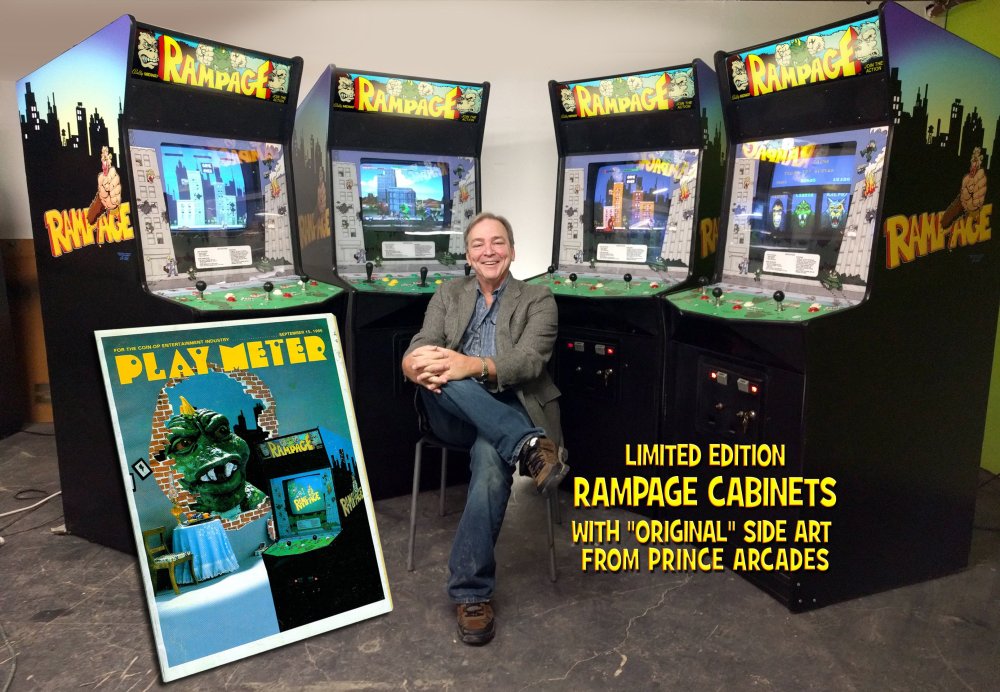
Humble Beginnings
The story of Rampage begins with one Brian F Colin. He studied filmmaking in college, and produced an animated film in his junior year called In Search of a Plot. It ended up winning several awards, and becoming quite successful. This gave Colin the idea to take it to ad agencies around Chicago in an attempt to get a job. Unfortunately, that didn’t quite work out.
“Every ad agency looked at my film and said the same thing: This is brilliant! This is funny! This is creative! You will have NO trouble getting a job somewhere else.” After exhausting his options, he started his own business doing hand drawn ads for local newspapers. “I was always a cartoonist, I never considered myself an artist. . .” said Brian, as I interviewed him from his home.
And for a while, his cartoon ads were doing great. But it became apparent that they weren’t doing well enough. So when an ad from Bally Midway popped up in the newspaper looking for an animator position, Colin was interested. “I’m thinking to myself ‘what would a company that makes pinball want with an animator?’ And it came to me. Because I was proficient with cel painting I figured ‘OK, they need someone to paint on the backglasses!'”
However, it turned out that Bally Midway had seen his film and they wanted him to join their brand new video game studio and do animation for their video games. Brian, who was used to meticulously detailing pen and ink art, wasn’t thrilled.
“I could not even imagine. . . I was not excited but I kept up a good front.” Colin figured that video games were big business, and if he could bluff and play his cards right, he could finally get out of the financial hole he was in with his struggling agency. He started to shake his head and said “I’m sorry guys. I’ve got a successful ad agency. I’d really love to take this job but you’d have to pay me more than $300 a month!”
George Gomez (now a pinball designer at stern), who was interviewing him, smirked and told him “Yeah, I think we can do a little better than that.” In the end, Colin was hired to work for $13,000 a year. A bit of an upgrade from the “free beer and popcorn” he’d been making working on his own.
Colin got to work, first with Discs of Tron (1983), and with many more to follow. After a few years he had amassed a bit of a crew that he liked to bounce ideas off of. Among them were artist Sharon Perry, programmer Jeff Nauman, composer Michael Bartlow, and game tester Jim Belt. They had all met working on classics such as Kozmik Krooz’r (1982), Spy Hunter (1983), Demolition Derby (1984), and Sarge (1985). It was this team that would be instrumental in the genesis of Rampage.
The Genesis of Rampage
“Rampage came out of, literally, a meeting after a trade show where I was complaining about wanting to do bigger characters, I wanted to show animation, I wanted to show expression, I wanted to show comedy. . . and I wanted to do background animation!”
In 1985, Brian Colin was sent to an industry trade show by Bally Midway and returned excited about the beautifully animated characters and backgrounds in competing arcade games. “Rampage came out of, literally, a meeting after a trade show where I was complaining about wanting to do bigger characters, I wanted to show animation, I wanted to show expression, I wanted to show comedy. . . and I wanted to do background animation!” Colin asked the technical team if they could do animated backgrounds with Midway’s contemporary MCR3 hardware and got a clear “no.” However, he wouldn’t hear it and continued to “argue” with the technical team and his crew about how they could pull it off.
After lots of discussion “someone cut it down to it’s simplest form. They said ‘you can animate a rectangle. What the hell are you gonna do with an animating rectangle?‘” Colin paused, and after thinking for a moment turned to artist Sharon Perry and said “Okay. A building. . . Falling into itself. . . Is an animating rectangle! We cover up the bottom with dust clouds and. . . What knocks down buildings? Really big characters!” This is a key moment to note as, contrary to popular belief, Rampage was not actually inspired by giant monster movies. It was inspired by a hardware limitation that forced some innovation.
Colin ran and grabbed Jeff Nauman to confirm a few technical details about how they could realize the destruction and use some of the tech they used to “fake” screen-scrolling on their previous game Sarge. In Colin’s words “he loved, it we loved, we all knew we had a big, big hit!”
Trouble from Corporate
“You can’t have cops being eaten!
You can’t have the player be the bad guy!”
Colin got to work writing the design document and after discussing with Jeff, Sharon, Mike, and Jim took it to their boss. Who absolutely turned it down. “He had a different project he wanted Jeff to work on, he had some specialty things he wanted to get done, he was a new manager who had just gotten a promotion… so I went over his head.”
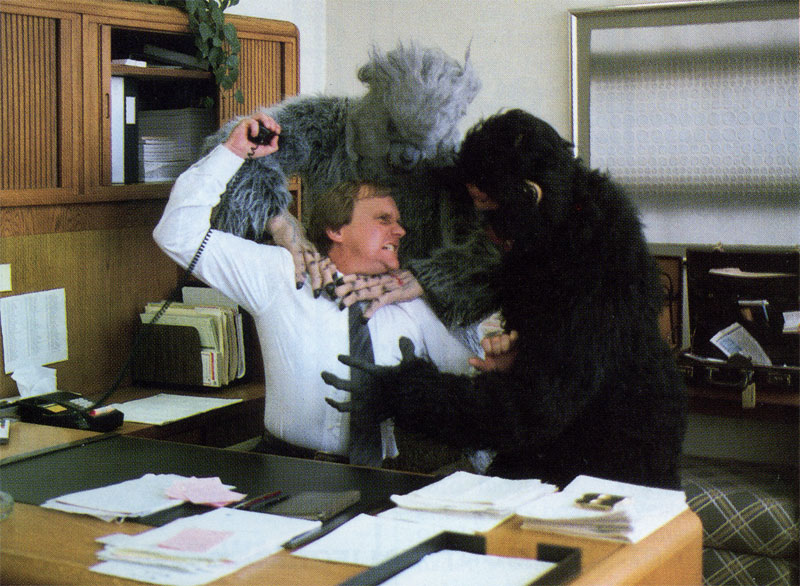
So Colin went to the Vice President of Engineering. “[He] loved the idea, loved this, oh this is brilliant but– no. You can’t have cops being eaten! You can’t have the player be the bad guy!” Colin tried to explain that the player was actually the victim- mutated into a monster out of their control, but to no avail.
However, they would not be dissuaded. “Jeff and I started working on it anyways, just to prove the concept. I started immediately working on George to see how many sprites it would take me to make that giant character.” It turned out to be a good thing they kept working on the game, as just around that time the top three people at Midway got “replaced,” Colin explained. “I shouldn’t say fired, I really don’t know what goes on at top management.”
Their replacement was one Maury Ferchen, who previously ran the Montgomery Ward retail store chain. Ferchen made two things clear to his employees: They would continue development on games moving forward and that he had an open-door policy.
So the first day that Ferchen showed up for work, someone was standing outside his door waiting for him with a pitch-deck. Thankfully, Ferchen was excited and greenlit the project.
Development Begins
Jeff Nauman did all the programming for the game, Mike Bartlow did all the sound, and Brian Colin did all the art and animation for the game, and even got to dust off his ink and paint skills “that was the first game where I got to do all the cabinet graphics, which I loved.” Sharon Perry and Jim Belt had other projects they were working on at the time but assisted in the initial design process and are credited on the design documentation for the game.
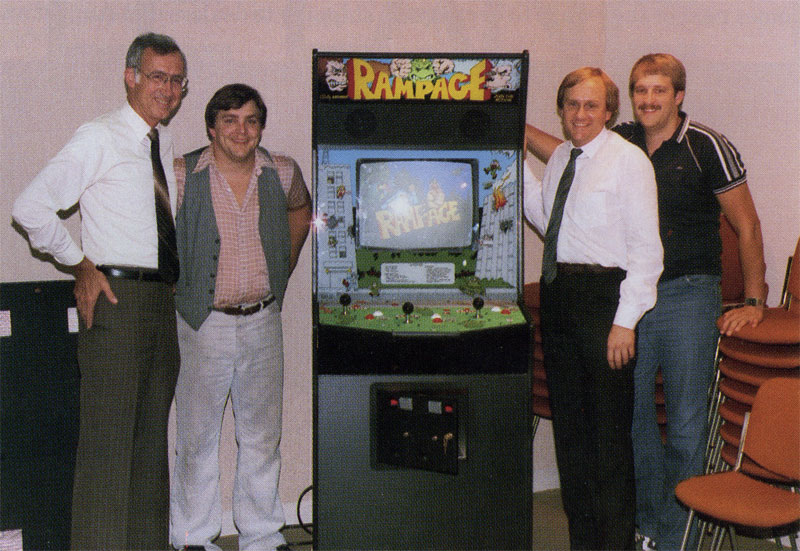
The game itself is simplistic by today’s standards but featured several innovations for its time: real-time dynamic destruction, the player characters are all villains, and 3-player co-opetition (it could be played competitively or co-operatively). That last point helped the team design a smart and subtly devious mechanic to help with sales.
Another key element of the game’s design was how it appeased both players and arcade operators. As Colin put it “You have two audiences, your arcade game players and your arcade game operators. The operator wants to get players off the machines as quickly as possible to get more quarters in, and the player wants to have fun and get a great value for the game.”
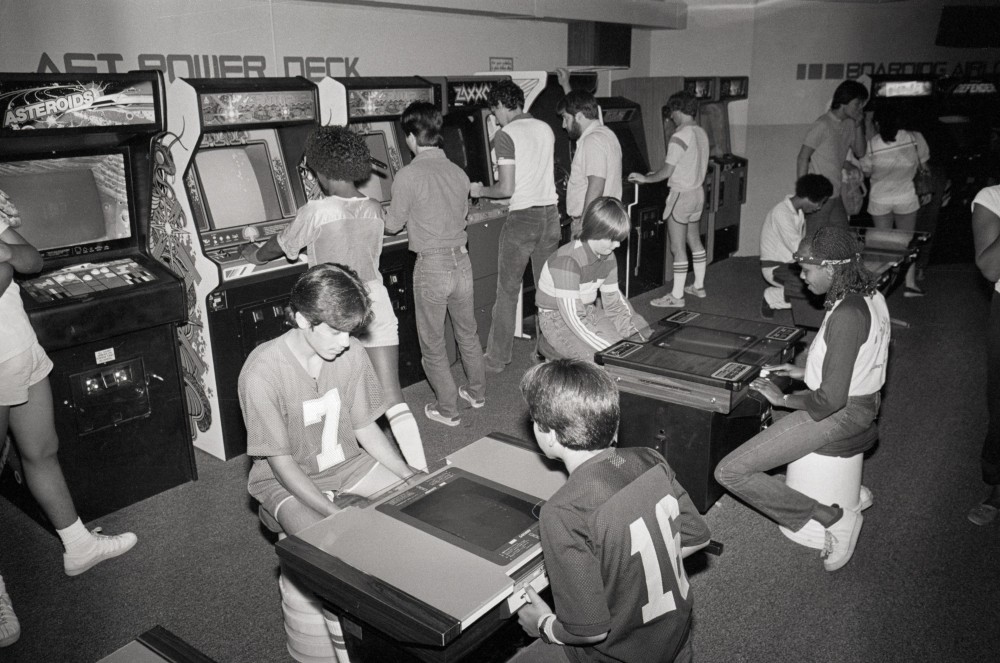
“The design doesn’t always end at how much fun the player is having. It has to consider if the company that’s paying me is making money on it!”
You see, at the time of development, Colin has a young daughter so he didn’t want to have the player characters die on screen. So once your player character loses all of its health, they revert back to their naked human form. This stirred up a bit of controversy: “Those few small pixels of nudity got us in more trouble than eating policemen, eating the national guard, stomping civillians, and destroying cities.” But more interestingly was how this little sight gag actually played into the competitive/co-operative gameplay.
You see, once your player is hurt enough and shrinks down to human size, they actually become like any other human npc- vulnerable to being eaten by another monster! So when players were playing together, and someone shrank back to human size, it would be a mad scramble to jimmy a quarter our of their pocket and stick it in the machine before their friends ate them. The contemplation of “should I or shouldn’t I?” was removed in the heat of the moment and this helped Rampage become an earnings monster (pardon the pun).
In fact, it ended up being Midway’s most successful game ever. While it would later be dethroned, Rampage’s success could not be understated.
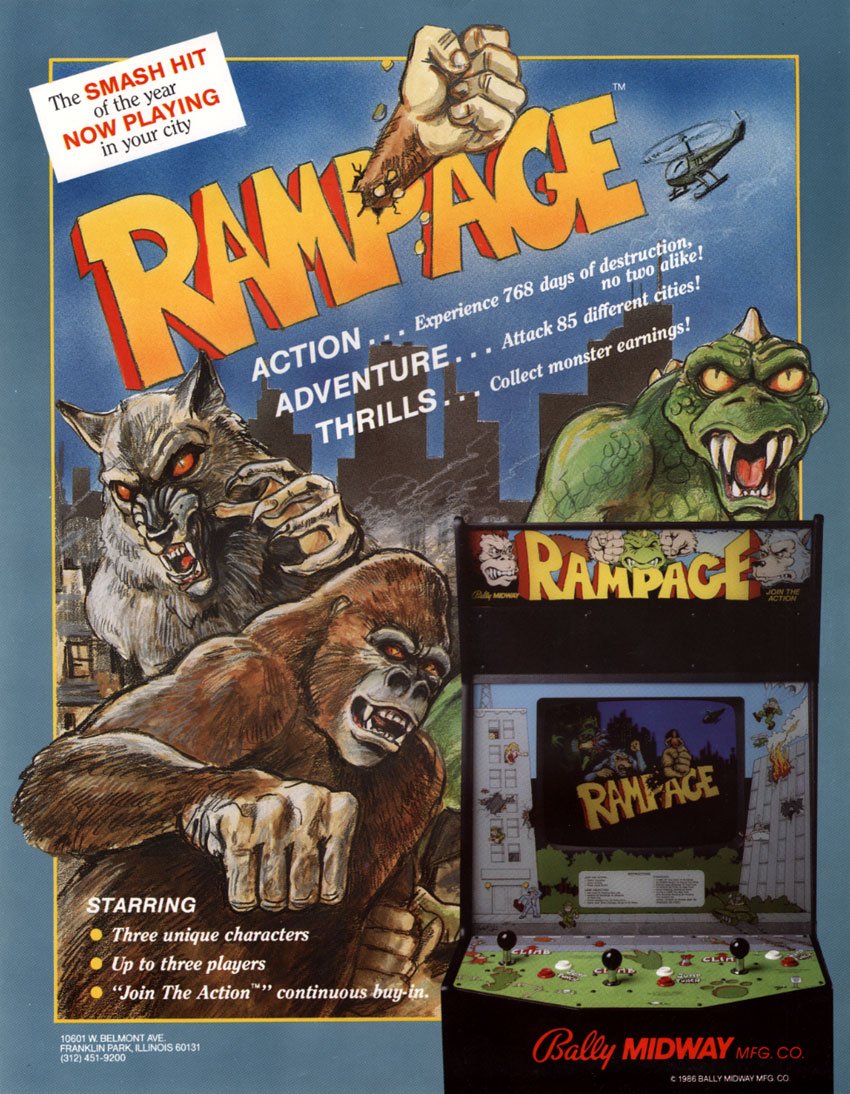
A lot of the appeal of Rampage, Colin thinks, is because of the comedic elements of surprise. The buildings are presented like giant scratch-cards or advent calendars filled with randomly assorted surprises and gags that the developers crammed in there. It kept the game fresh from quarter to quarter.
Another big part of the appeal is the freedom players had to compete or co-operate. To attack each other or simply clear out the buildings and military as fast as possible. As Colin puts it “you can play the game however you wish to play it!”
Universal Studios Enters the Ring?
My initial contact with Brian was actually to ask him about a longstanding rumour that Universal Studios had, at one point, come into contact with the development team requesting to turn it into a universal monsters game. The rumor continues that the failed license deal is what led to the third monster, Ralph, being a wolfman. If true, this would neatly explain the origin of the odd-monster-out and could provide even more information on a deal lost to gaming history! Perhaps an alpha version? After all, while Lizzie and George make sense in terms of monster movie counterparts, a Wolfman seems a bit left-field.
Mr. Colin was quick to dismiss the claim. “Total hogwash!” he laughed. “We started working on the characters before we even got the greenlight. The game was always my monsters- our monsters and never anything but!” He speculates where this rumour may have come from “maybe someone at Bally in the marketing department talked to Universal- who knows? But if they did, it certainly never came down to us and if it had we would’ve laughed in their faces!”
With that formally debunked, Colin went on to debunk a few further myths floating around on Wikipedia and explain the origins of the three monsters.
Monster Origins
Colin explains that he got to work on George first and will admit that George is a giant ape because of King Kong. “I’m a huge fan of Harryhausen and Willis O’Brien so I made George an ape.”
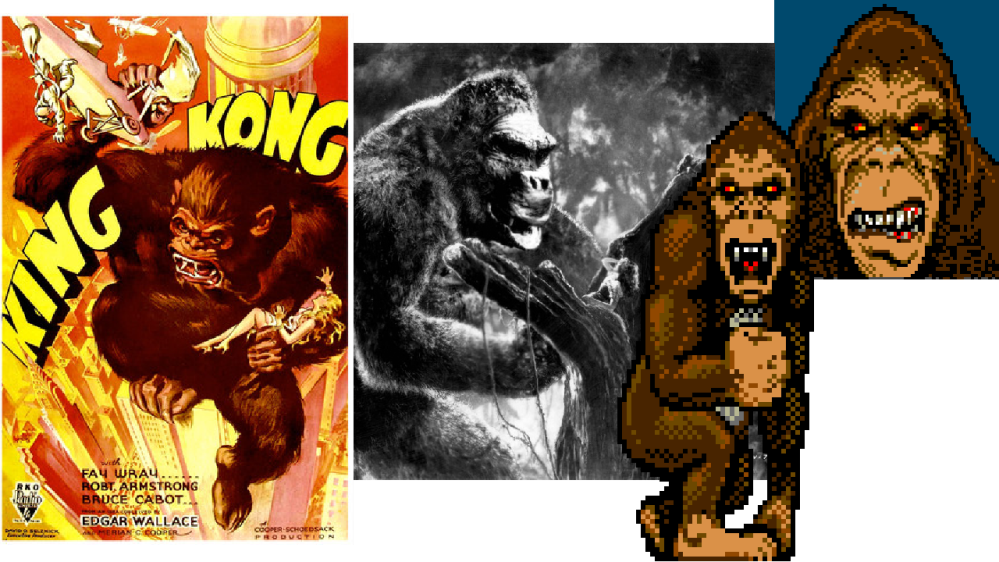
However with Lizzie things take an unexpected turn “Lizzie had to be a lizard, but she had to fit the same frame and size as George.” explained Colin “There’s no way Godzilla could fit inside that frame! Godzilla smashes buildings but Godzilla, ya know, has an ass the size of Boston! We couldn’t do Godzilla in that game even if we wanted to.” It turns out, Colin was never really a big fan of Godzilla, and his inspiration for Lizzy was actually the Ymir from 20 Million Miles to Earth- a fact made oh so clear once you put the two side by side.

So what about the origin of Ralph? If it’s not Universal’s wolfman then what is he? Colin chuckled “Ralph is Ralph because he’s just George with the head swapped out and different colour palette. That way we could squeeze three monsters into the game without using three times the sprites.” Again, necessity breeds invention. Mystery solved.
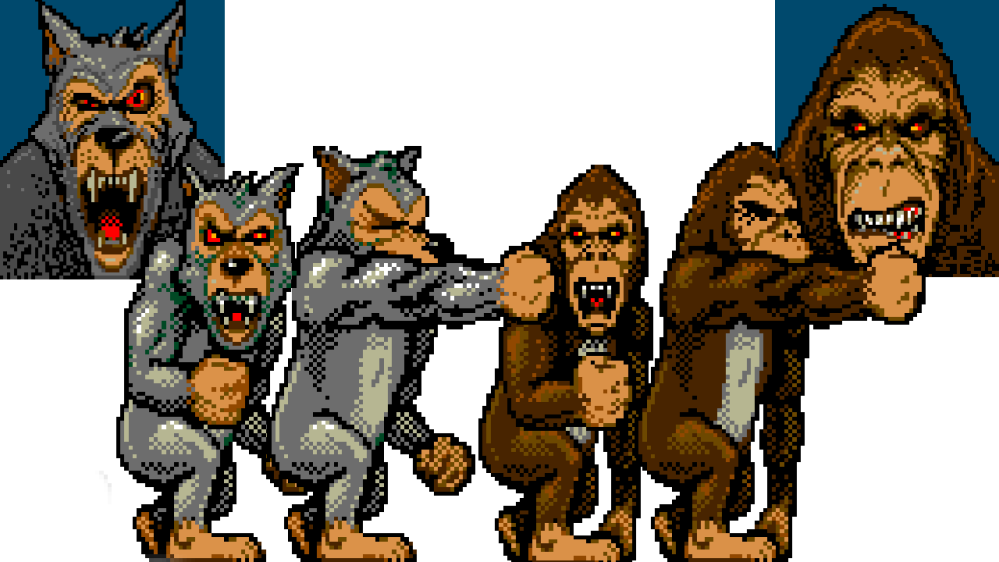
“As a kid I was terrified of monster movies. As a teenager I became a big Famous Monsters, Forry Ackerman stuff- I loved the classic monsters as a filmmaker. I was never too much into gore or horror, but I did love the classic monster movies. I was not a Godzilla fan, or a kaiju fan- I more appreciated the work of Harryhausen and Willis O’Brien because as an animator I had tried my hand at that kind of stuff.”
Move to Indpendence
After the success of Rampage, Colin and Nauman worked on several successful games, including basketball game Arch Rivals (1989) and American football game Pigskin 621 A.D. (1990). At this point, they were approached by Electronic Arts and encourage to start their own studio. So they did, and Game Refuge was born.
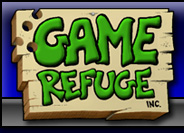
But that’s a story for another article, as Game Refuge would create, among many things, a bonafide sequel to Rampage in Rampage: World Tour.
The Game Itself
So what about the game itself? It seems like I’ve already written far more than I intended to, so I’ll keep this section brief.
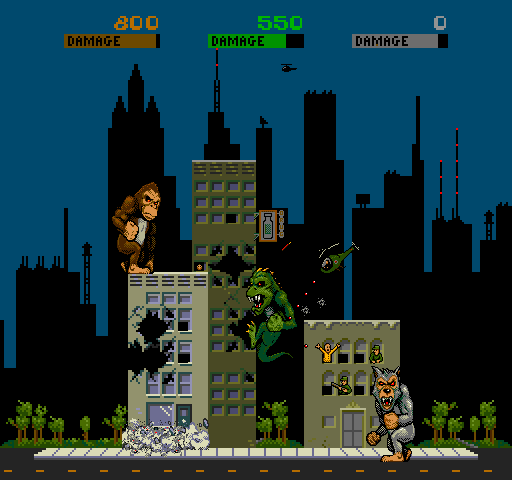
Rampage is a fairly simple game, and in its arcade original format it’s fairly difficult, too! You can walk, jump, punch, climb, and grab various objects strewn about the levels. Each level is a single screen and the goal is to destroy all of the large buildings in order to advance to the next level.
While the core concept is simple, there is a surprising amount of variety. You will fight tanks, choppers, bombers, and military personnel (who you can also eat). You’ll find a variety of hazards and gags in the buildings as well – a man taking a bath that sprays you with water, a photographer that takes your picture, stunning you, a toaster that will shock you if you don’t wait for it to pop up the toast inside, etc.
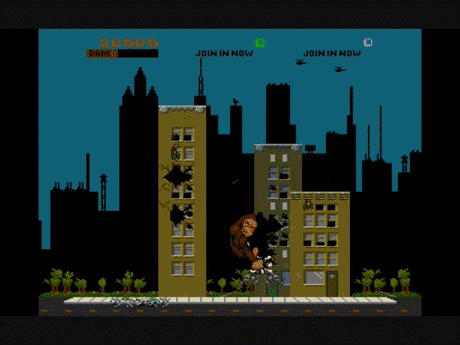
The destruction is also quite robust for a game from 1986. Different parts and sizes of buildings have different thresholds for destruction and you can even demolish tops of buildings leaving bottoms standing.
The game is simple, and fairly repetitive, but the gags and destruction keep it fun and fresh. Best enjoyed in short bursts with friends, whether you’re playing cooperatively or competitively!
Platforms
Rampage’s huge success brought the game to a deluge of platforms. Even though Colin and his team never touched the console ports (they would playtest them) but they never were involved in the development. At the end of the day, Rampage’s immense success led to ports on the following platforms:
- Nintendo NES
- SEGA Master System
- Atari Lynx
- Amstrad CPC
- ZX Spectrum
- Apple II
- Commodore 64
- Amiga
- Atari ST
- Atari 2600
- Atari 7800
- Atari 8-bit
- TRS-80 Color Computer
- MS-DOS
- IBM PC
- Gameboy Advance
- Arcade Classics mini-arcade
The title was also included in various Midway compilations for PC and home platforms.
Of these ports, a few are of certain interest. The NES version, while incredibly popular, lacks some basic features like jumping onto the sides of buildings and completely removes Ralph. The Gameboy Advance version is fairly accurate, and updates the visuals a bit to add transparency and more colours on the characters. The Master System version is a solid conversion. The Atari Lynx version actually adds a new playable character, Larry the Rat (also referenced in the 2018 movie), as it is the only version of the game to support 4-player multiplayer (through link cable). There is also an odd tabletop version of the game that contains a modified NES ROM with Ralph reinserted! It’s not clear what the origin of this ROM is.
If you’re interested in seeing the various ports in action, check out this video that goes over the majority of them.
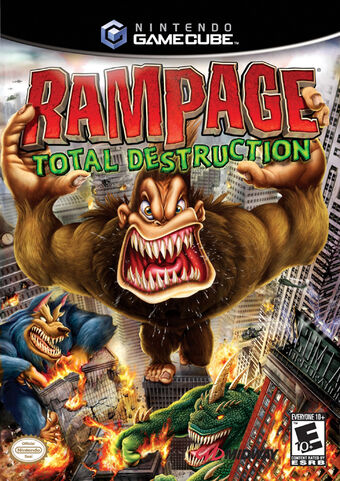
If you’re looking to grab a copy of Rampage, I recommend picking up Rampage: Total Destruction since it contains the original game and World Tour. The emulation isn’t perfect, but it’s easily accessible and affordable! The Wii version has superior emulation but forces you to use Wii Remote and Nunchuk controls, so keep that in mind when picking a copy up!
Trivia
- Despite being a game about giant monsters smashing cities, this writer was unable to find any evidence that any of the Rampage games have ever been released in Japan. It would seem the first instance of Japanese-released Rampage content is the 2018 film!
- The game contains 768 levels, more than Colin and company ever thought anyone would play. Turns out they were wrong and players complained about a lackluster ending screen!
- The human portraits alongside the monsters in the game are Brian Colin (George), Brian Colin’s Wife (Lizzie), and Jeff Nauman (Ralph).
- The “woman in the red dress” at the title screen and edible in the levels, is also famously referenced in the 2018 film.
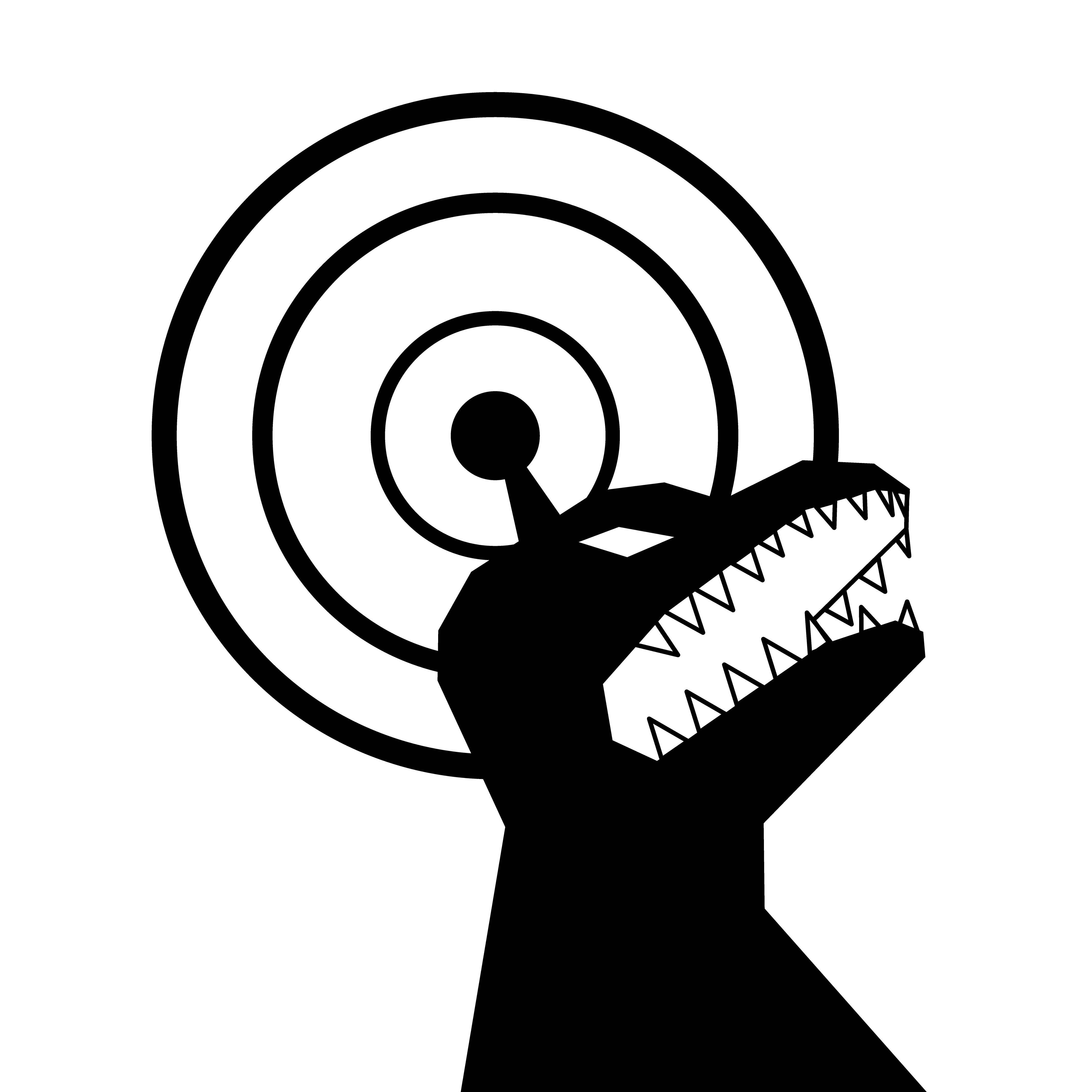










3 thoughts on “Kaiju Video Games – History of Rampage (1986)”